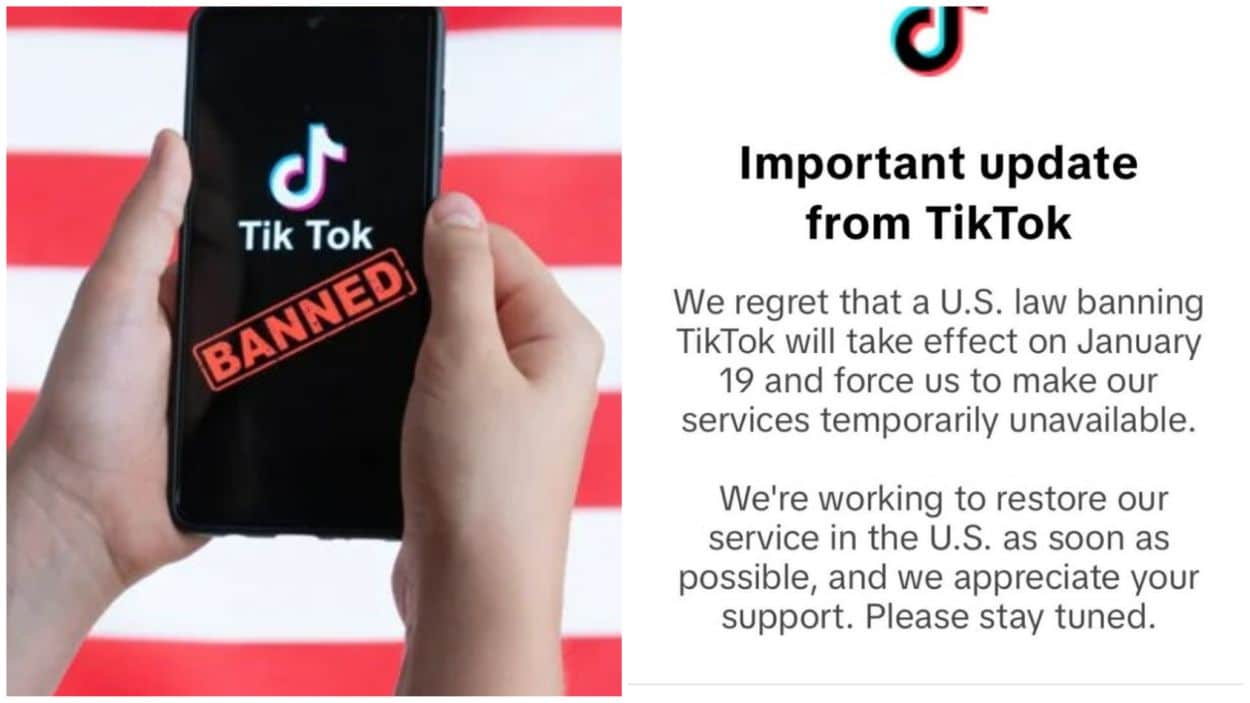TikTok disappeared from millions of devices across the United States on Saturday evening. Google Play and Apple’s App Store removed the app, although it remains accessible on installed devices. Now, users who try to open the app encounter a pop-up message informing them of the ban.
As the ban deadline drew near, TikTok users braced for impact, with many transitioning to other platforms, such as the Chinese social app Xiaohongshu, also known as RedNote. For those still eager to access TikTok’s diverse content, including skin-care hacks, budgeting tips, and unique pet tortoise influencers, there are ways to circumvent the ban and continue using the app.
The wired reported that the app now shows a message stating, “Sorry, TikTok isn’t available right now. Unfortunately, that means you can’t use TikTok at the moment. We are fortunate that President Trump has indicated that he will work with us on a solution to reinstate TikTok once he takes office. Please stay tuned!” ByteDance, the parent company of TikTok, has also seen other apps like CapCut and Lemon8 removed from US app stores.
This unprecedented U.S. ban is still in the initial phases of its technical implementation, and the methods for enforcement and circumvention are likely to evolve. The Protecting Americans From Foreign Adversary Controlled Applications Act (PAFACA) does not outlaw the possession of TikTok, nor does it require TikTok to cease its operations in the U.S.
Nonetheless, TikTok planned to make the app inaccessible to U.S. users before the law was enforced, a move the outgoing Biden administration labelled a “stunt.” While TikTok may have responsibilities under the new law, the Biden White House did not intend to enforce the ban before Trump assumed office on Monday.
PAFACA mandates that app stores and cloud services stop distributing, maintaining, or updating TikTok. This directive forces companies like Apple and Google and infrastructure providers like Oracle to halt new downloads or updates for the app, likely leading to its gradual functional decline.
The situation is similar to actions taken in India, where TikTok was banned in 2020. The company proactively blacked out the app for users who had it installed. In India, TikTok users had to remove their Indian SIM cards or use international ones and run VPNs to access content.
VPN technology allows users to redirect their internet traffic through worldwide servers, hiding their real IP addresses and circumventing geographical content restrictions. This setup also shields users from ISP surveillance, adding an extra layer of privacy.
Nonetheless, VPNs have limitations; certain providers might log user data that law enforcement can access, so choosing a trustworthy VPN service is crucial.
Currently, TikTok’s methods of blocking U.S. users are stringent, and using non-U.S. SIM cards and VPNs does not guarantee access. Nonetheless, these restrictions may be temporary, as there is little enthusiasm for a permanent ban. Recent comments from President Trump hint at a possible reassessment of the situation.






